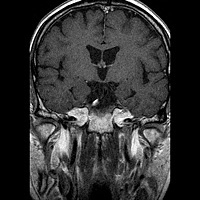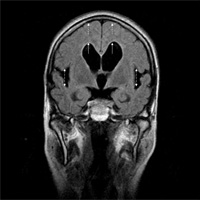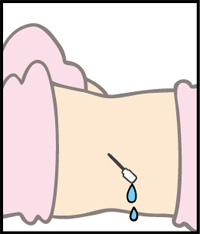- HOME
- For Patients
- Normal pressure hydrocephalus
- Diagnosis of normal pressure hydrocephalus
Normal pressure hydrocephalus
- About normal pressure hydrocephalus
- Symptom of normal pressure hydrocephalus
- Diagnosis of normal pressure hydrocephalus
- Treatment of normal pressure hydrocephalus
Diagnosis of normal pressure hydrocephalus
If computed tomography (CT) of the head shows an accumulation of cerebrospinal fluid and enlargement of the cerebral ventricles, magnetic resonance imaging (MRI) is performed. If MRI shows a large amount of fluid in the center of the brain and the top of the brain appears to be pushing against the skull, there is a strong possibility of NPH.
[ MRI of healthy brain ]
[ MRI of patient with NPH ]
The next stage of testing is called a "tap test", in which the accumulated cerebrospinal fluid is removed to see how the patient responds. This does not involve inserting a needle into the brain. Cerebrospinal fluid flows from the brain down the center of the spine until it reaches the lower back. In the tap test, a local anesthetic is administered in the lower back, and a fine needle is inserted there to remove around 30 ml of cerebrospinal fluid and observe the response. The tap test takes around 20 minutes to complete. Although only a small volume of cerebrospinal fluid is removed, the tap test shows how well a patient will respond to treatment. If symptoms improve within around 1-2 days, surgery will be considered.
[ Illustration of the tap test ]

[ Close-up illustration of the lower back ]








